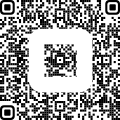|
Tacoma's only men's professional football team was a one-year
wonder, the Indians. They won seven regular season games, lost four,
averaged about 13,000 fans for five Sunday games at Stadium Bowl,
managed to get a spot in the PCPFL's championship due to a quirky
forfeit by the rival San Francisco Clippers, quickly gathered to
travel to Los Angeles for the title game, were trounced, 38-7, and
never played again.
The Marvs (Tommervik and Harshman) made the most money. They each
were paid $7,800 by owner Al Davies, who owned Birchfield Boiler on
Tacoma's Tideflats, building steel boilers and ships. The team's
headquarters was in the boiler plant at 2503 E. 11th St.
Davies paid the Marvs a $2,000 bonus to sign with the fledgling
Indians, rather than the AAFC's New York Yankees. "Davies gave us
the extra money because we were local guys and they thought that
would draw fans," Harshman said. Harshman and his wife Dorothy used
the signing bonus to buy a set of solid birch furniture. "I was 28,"
he said, "and wanted to do something with my life."
They rarely practiced. Slivinski occasionally called a practice at
Renton High School, since many of the players worked in Seattle or
attended graduate school at UW. Cusworth drove to Sunday games from
Cle Elum, where he worked in a coal mine.
Home games were at Stadium Bowl. It had no track, no grass, just
that grand view. There were H-shaped wooden goal posts set at the
goal line. "You'd go down and hook the goal post with your arm so
you could swing in another direction," Harshman said, "and that
would run the defender into the post. Tommervik would get the ball
to you and you'd have a touchdown."
Tickets cost $2.50 for east-side bleachers, $1.50 for the west end
zone and 75 cents for kids. The Elks Club band played and the Eagles
fraternal drill team performed. Fans received refrigerators, nylon
stockings and men's topcoats in drawings held during the game.
The Indians rode Pullman trains to games in Salt Lake City,
Sacramento, Oakland and San Diego, and a plane to Honolulu. "We flew
to Hawaii," Slivinski said, "and played two games over there.
Everybody who went to Hawaii played two games to cover the travel
(expense). Hawaii (the Hawaiian Warriors) had no road games.
"They had their own officials. With 20,000 people in the ballpark,
the officials were reluctant to make a call against the home team."
A reserve end and quarterback, a former UW player and Philadelphia
Eagle named Chuck Newton dreaded flying. He drank a fifth of whiskey
to prepare for the Matson Airlines four-motor prop plane's trip to
Hawaii. "The guys carried Chuck onto the plane," Harshman said.
"He would rather have walked to Hawaii," Tommervik said.
The Hawaiian Warriors had a tackle named Wayne Sterling, who had
played at UW. He was a Honolulu police lieutenant. He threw a luau
for the Tacoma team. "It lasted for days," Tommervik said. "We slept
right on the beach."
"Girls met us with leis at the Honolulu airport," Harshman said. "We
had left our pregnant wives at home and we thought we were really
something."
The Indians made $50,000 from their cut of the proceeds of the trip
and it went towards allowing the team to finish in the black for the
season but returned battered having lost a number of players to
injuries in the 2 games with Hawaii.
The Indians' best receiver was a former Ballard High and PLU end
named Sigurd Sigurdson, who everyone called "Sig." He caught passes
for 104 yards for the 1947 Baltimore Colts in the AAFC, broke his
ankle and never played again.
When the Indians traveled the host team would put up $2,500 in
guaranteed money to cover the weekly salaries of the players.
More proceeds would be split between the teams. They in turn
had to put up the same amount when hosting a game in the PCPFL.
The most lucrative games proved to be the long trip to Honolulu to
play a 2 game set with the Hawaiian Warriors. With fans
numbering 16,000 and 25,000 for the two games, the Indians brought
home $50,000 as their cut.
DO YOU HAVE INFORMATION TO CONTRIBUTE?
CONTACT US! (email)
|

Indians backfield:
#33 Marv Harshman
#10 Tippy Lockard, #85 Bob Barrett, #44 Tommy Tommervik
Roster Included
(10/11) Tippy Lockard, (14) Joe
Rettinger, (15) Jimmy Cain, (20) Sigurd Sigurdson, (26) Gene
Walters, (30) Elmer Berg, (33) Marvel Harshman, (34) Bob
Erickson, (40) Marvin Tommervik, (50) Earl Platt, (54) John
Norton, (55) Harry Cusworth, (66) Arvid Andreason, (74) Joe
Wasser, (75) Dick Greenwood, (77) Bill Mayther, (80) John
Karlis, (84) Chuck Newton, (85) Bob Barrett, (88) Bernei
Smith, (90) John Tsoutsouvas, (95) Earl Younglove, (99) Byng
Nixon
|
1946
Pacific Coast Professional Football League
Record 7-5
Owner/GM Al Davies
Coach Steve Slivinski
* PCPFL North Division Champions
*
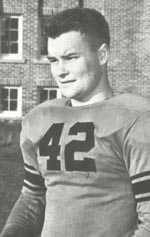
1946 Northwest Player of the
Year
Marv "Tommy Gun" Tommervik
GNFA Hall of Famers
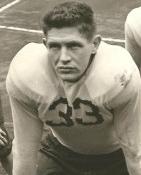
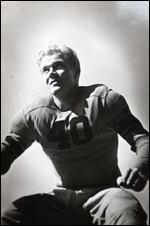
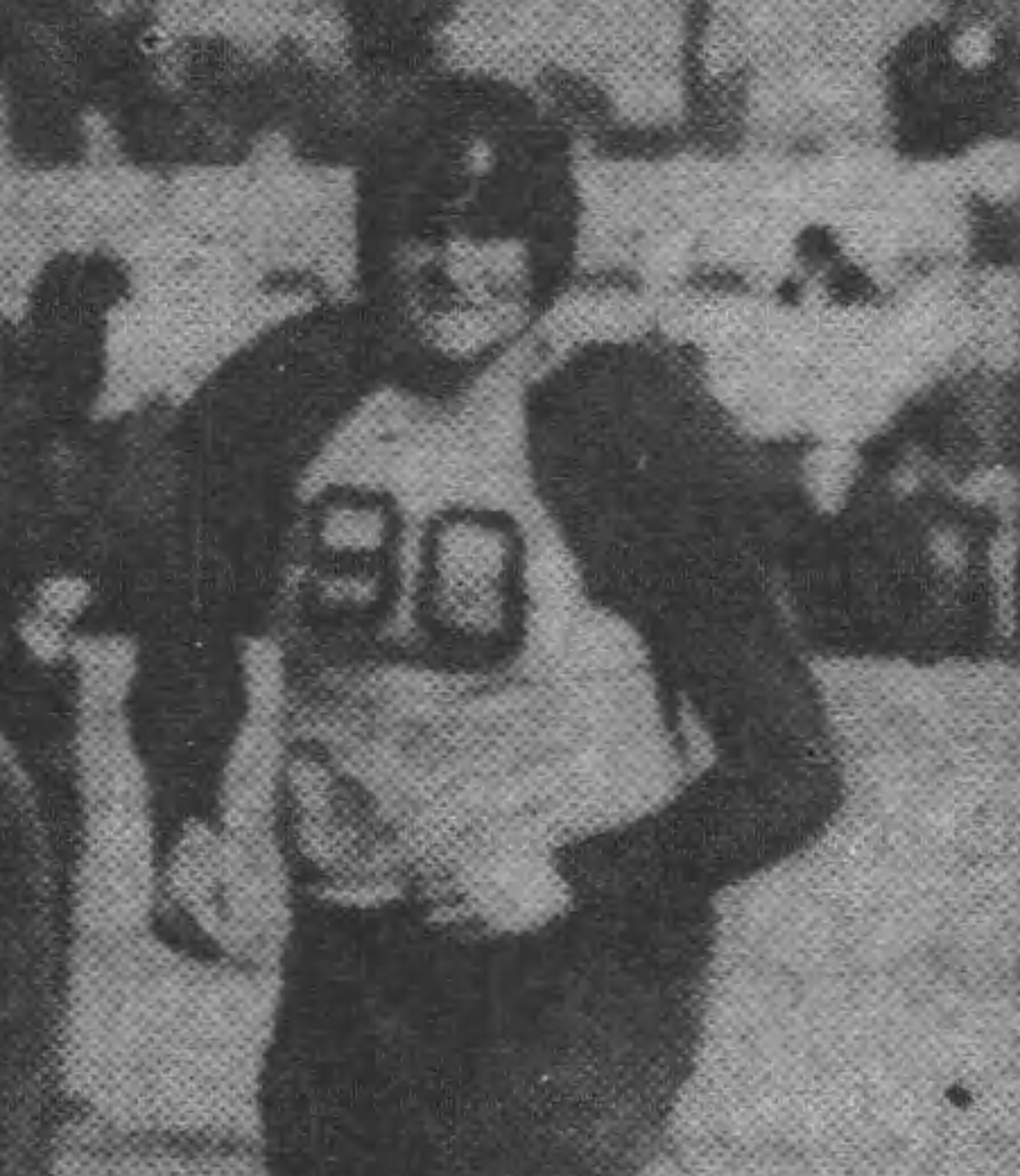
Marv Harshman,
Sig Sigurdson,
John Tsoutsouvas |
|
Schedules and Results |
| Date |
Opponent |
Score |
| 1946
Sep 15 |
@ Salt Lake Seagulls |
27-6 |
| 1946
Sep 22 |
San Francisco Clippers |
7-21 |
| 1946
Sep 29 |
San Diego Bombers |
13-0 |
| 1946
Oct 6 |
@ Oakland Giants |
14-6 |
| 1946
Oct 13 |
Sacramento Nuggets |
37-6 |
| 1946
Oct 20 |
Oakland Giants |
20-13 |
| 1946
Nov 3 |
Salt Lake Seagulls |
24-7 |
| 1946
Nov 17 |
@ Sacramento Nuggets |
21-7 |
| 1946
Dec 1 |
@ Hollywood Bears |
6-9 |
| 1946
Dec 8 |
@ Hawaiian Warriors |
30-35 |
| 1946
Dec 15 |
@ Hawaiian Warriors |
13-30 |
| 1947
Jan 19 |
@ Los Angeles Bulldogs (Championship) |
7-38 |
| |
|
|
| |
|
|
| |
|
|
| |
|
|
| |
|
|
| |
|
|
| |
|
|
| |
|
|
| |
|
|
| |
|
|
| |
|
|
| |
|
|
| |
|
|
| |
|
|
| |
|
|
| |
|
|
| |
|
|
| |
|
|
| |
|
|
| |
|
|
| |
|
|
| |
|
|
| |
|
|
| |
|
|
| |
|
|
| |
|
|
| |
|
|
| |
|
|
| |
|
|
| |
|
|
| |
|
|
|
|


